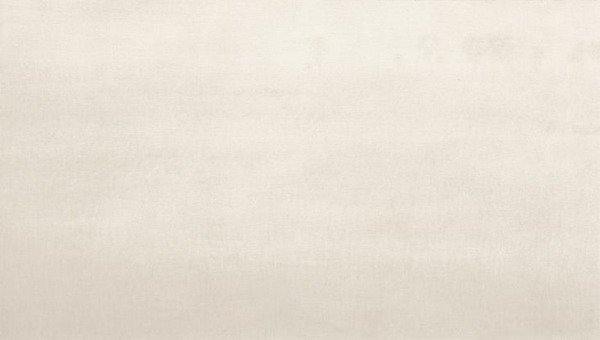Qiu Shihua
dal 23/4/2012 al 4/8/2012
Segnalato da
23/4/2012
Qiu Shihua
Hamburger Bahnhof, Berlin
White Field. A selection of works, from his early paintings to his most recent ones, which are emblematic of Shihua's overall oeuvre. At first glance, artist's works appear as monochrome, almost completely white canvases; with his white landscapes the artist questions the concept of visibility in painting. This is the first solo exhibition by the Chinese artist to go on show in a European museum.

The Nationalgalerie at the Hamburger Bahnhof – Museum für Gegenwart – Berlin is proud to present the first solo exhibition by the Chinese artist Qiu Shihua ever to go on show in a European museum. A selection of works, spanning from his early paintings from the seventies up to his most recent canvases, are emblematic of Qiu Shihua’s overall oeuvre. As such, the exhibition offers a representative overview of the creative output of an artist whose work undoubtedly ranks as one of the most outstanding artistic achievements in contemporary art.
At first glance, Qiu Shihua’s works appear as monochrome, almost completely white canvases. However, on closer inspection, expansive landscapes emerge from their painterly surfaces, which, depending on the way you look at them, gradually blossom with detail, or recede again from view. The complex visibility of the images can only be truly grasped through closer scrutiny. Beyond the mere act of seeing, an appreciation of these canvases requires the ‘thinking eye’, a mode of seeing consistently demanded by relatively few contemporary artists working today.
With the white landscapes the artist questions the concept of visibility in painting. The artist has his motifs appear and disappear, as they lie captured in and under thin, white layers of paint and translucent glazes. The way Qiu repeatedly revisits the ‘white landscape’ as a picture type and his tireless occupation with the nuances of its changeability are signs of Taoist thinking and a Taoist approach to work. This outlook is characterized by the process of repetition, whereby presence and absence, the full and the void, depiction and withdrawal are brought into constant interplay with each other. The depiction of a landscape forms one pole in this process, while the simultaneous effacement of the same forms the other. Seeing becomes an interplay of perception. In this, associations can be drawn with the shan shui (or ‘mountain-water’) tradition of Chinese painting, which required similar modes of seeing in a shifting process between the opposite poles of emptiness and fullness of the depicted subject.
At the same time though, Qiu Shihua’s style of contemporary painting has been largely informed by an intense study of Western art. In Qui’s works, the viewer gazes into expansive, deserted plains – isolated and devoid of people. These pale compositions are teeming with atmospheric effects: contours blur as if shrouded in fog, while in other areas of the canvas the transparent opaques are suggestive of a profusion of forms. By opening themselves up to the pictures, viewers allow their attention to also be drawn to their own sense of perception and their own surroundings. This way of experiencing the art bears a relation to European Romanticism, in which a close link is forged between viewer and landscape. The repeated use of the colour white in Qiu’s painting forms a further essential parameter for artistic contemplation. In this, Qiu stands in the tradition of a form of abstract painting by post-war artists in the West who experimented extensively with the colour white and whose works gave new expression to the importance of painterly reduction for the medium of painting.
Qiu Shihua’s white landscapes thus hover between these poles of Western attitudes to abstraction and reduction on the one hand, and East Asian concepts of repetition and emptiness on the other. His works are an expression of a sustained ambivalence, which manifests itself in the ‘white landscapes’ as ceaseless changeability of subject and perception.
Qiu Shihua was born in 1940 in Zizhong, Sichuan Province, China. He studied painting at the Xi’an Academy of Fine Arts, where his training was primarily in traditional Chinese painting. At the end of his time as a student he created works in a socialist-realist vein that drew from Soviet models. He completed his training in 1962 and worked through the Cultural Revolution up to 1984 as a painter of posters for a cinema in Tongchuan. Exhibitions and travels in and around Europe were important in the development of his oeuvre, as was his turning to Taoism.Qiu Shihua lives and works in Beijing and Shenzhen, China.As part of a collaboration between the Nationalgalerie – Staatliche Museen zu Berlin and the Museum Pfalzgalerie Kaiserslautern, an expanded version of the exhibition is due to go on show in Kaiserlautern in autumn 2012.
Events accompanying the exhibition
A talk will be held to accompany the exhibition:
14 May, 7 p.m. Tradition and presence in the works of Qiu Shihua [will be held in German] in the exhibition space
A discussion with Birgit Hopfener, Freie Universität Berlin and Uta Rahman-Steinert, Museum für Asiatische Kunst, Staatliche Museen zu Berlin. Introduction: Dr. Katharina Schlüter, Curator of the exhibition
Catalog published by Richter & Fey Verlag, Texts: Silke von Berswordt, Price: 50 Euro
The exhibition is made possible by the Verein der Freunde der Nationalgalerie.
Press office:
Dr. Katharina von Chlebowski Tel +49 (0)30 26 39 48 80 Fax +49 (0)30 26 39 48 811 presse@freunde-der-nationalgalerie.de
Press conference: Thu 24 April 2012, 10am
Opening Thu 24 April 2012, 10am
Hamburger Bahnhof-Museum für Gegenwart
Invalidenstrasse 50-51, Berlin
Tue-Fri 10am-6pm, Sat 11am-8pm, Sun 11am-6pm
Tickets: 8 Euro / 4 Euro



